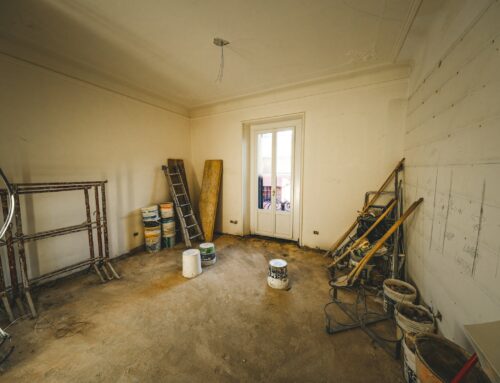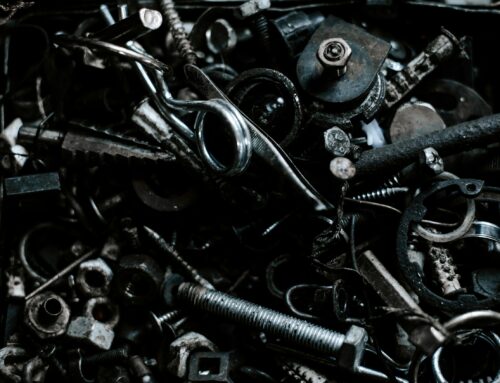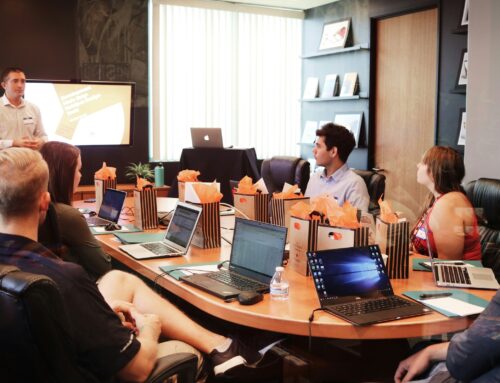Scrap metal collection and recycling actively reduce waste, conserve natural resources, and promote sustainability. Rather than allowing old metal items to accumulate in landfills, recycling repurposes, reuses, and reintegrates these materials into manufacturing. At M.A & Sons Waste Removal & Scrap Metals, we collect and process scrap metal in Leatherhead, ensuring responsible and environmentally friendly waste management.
Step 1: Scrap Metal Collection
The first step in metal recycling is the collection of scrap metal from various sources. This can include:
- Household items such as old appliances, pipes, and radiators.
- Construction and demolition waste, including metal beams, wiring, and roofing materials.
- Industrial scrap metal, such as machinery and factory waste.
- Automotive scrap, including old car parts, engines, and wheels.
Step 2: Sorting and Categorising Metals
Once the scrap metal is collected, it must be sorted and categorised into different types. There are two main categories of scrap metal:
Ferrous Metals (Contain Iron)
- Steel – Commonly found in construction materials, appliances, and vehicles.
- Cast Iron – Used in cookware, radiators, and industrial equipment.
- Wrought Iron – Found in fences, gates, and furniture.
Non-Ferrous Metals (More Valuable, Do Not Contain Iron)
- Aluminium – Used in cans, window frames, and car parts.
- Copper – Found in electrical wiring, plumbing pipes, and roofing.
- Brass – Used in fixtures, musical instruments, and locks.
- Stainless Steel – Commonly found in medical tools, kitchenware, and industrial machinery.
At this stage, powerful magnets and sorting equipment actively separate ferrous and non-ferrous metals, allowing each type to undergo the appropriate processing method. This ensures efficient recycling and maximises the materials’ reuse potential.
Step 3: Processing and Shredding
Once sorted, the scrap metal is processed and prepared for recycling.
How Scrap Metal is Processed:
- Shredding – Large metal items are broken into smaller pieces for easier melting.
- Baling – Some metals are compacted into blocks to facilitate transport.
- Cleaning – Contaminants such as plastic, rubber, and paint are removed to ensure the metal is pure and ready for recycling.
Step 4: Melting and Purification
After cleaning and shredding, the metal moves to foundries and smelting plants, melting at extremely high temperatures to prepare for recycling.
Key Processes:
- Melting – Furnaces heat scrap metal until it reaches a liquid state, making it easier to reshape and repurpose.
- Purification – Unwanted impurities are extracted to ensure the resulting recycled metal maintains high quality.
- Alloying – Specific metals combine with other elements to create stronger, more durable materials for various manufacturing applications.
Melting metal requires significantly less energy than producing new metal from raw materials, making the process more eco-friendly and cost-effective.
Step 5: Repurposing Recycled Metal for New Products
After purification, the molten metal cools and takes shape in various forms, such as sheets, bars, and coils. Manufacturers then utilise these materials to produce a wide range of new products, including:
- New vehicles and machinery
- Construction materials (beams, pipes, and fittings)
- Electronics and appliances
- Packaging materials, such as aluminium cans
By recycling scrap metal, manufacturers can reduce the need for raw material extraction, lower environmental impact, and conserve natural resources.
The Benefits of Scrap Metal Recycling
Reduces Waste and Landfill Overload
Metal takes a long time to degrade, and throwing it into landfills contributes to environmental pollution. Recycling keeps waste out of landfills, reducing environmental harm.
Saves Energy and Natural Resources
Recycling metal requires far less energy than mining and refining new materials. For example:
- Recycling aluminium saves up to 95% of the energy used in new production.
- Recycling steel saves about 60% of the energy compared to mining and refining new steel.
Provides Economic Opportunities
Recycling scrap metal supports local businesses, creates jobs, and contributes to the economy. Many industries rely on recycled metals to manufacture new products more efficiently.
Reduces Carbon Emissions
Recycling metal instead of mining new raw materials significantly reduces greenhouse gas emissions, which in turn helps combat climate change. By opting for recycled metals, industries minimise their carbon footprint and decrease the environmental impact of metal production.
If you have scrap metal waste that needs clearing, don’t let it go to landfill—turn it into an opportunity. Contact M.A & Sons today to book your scrap metal collection in Leatherhead.





